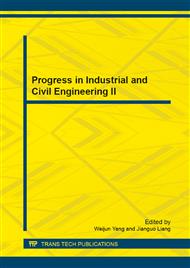p.3061
p.3065
p.3070
p.3075
p.3081
p.3086
p.3090
p.3094
p.3099
Concrete Crack Control in Monolithic Concrete Bed Construction of High-Speed Railway in Northwest Area of China
Abstract:
There were some reasons which cause the concrete cracks in monolithic concrete bed construction of high-speed railway. In this paper, combined with the specific situation of monolithic concrete bed construction of high-speed railway in northwest area of China, the states and causes of two kinds of cracks in monolithic concrete bed of high-speed railway were analyzed, the concrete cracking control measures were discussed from the concrete mixture ratio, construction technology and maintenance measures and other aspects, and the corresponding views were put forward. The study results had the important guiding significance on crack controls of concrete structure during the construction process of northwest area.
Info:
Periodical:
Pages:
3081-3085
Citation:
Online since:
September 2013
Authors:
Price:
Сopyright:
© 2013 Trans Tech Publications Ltd. All Rights Reserved
Share:
Citation:


